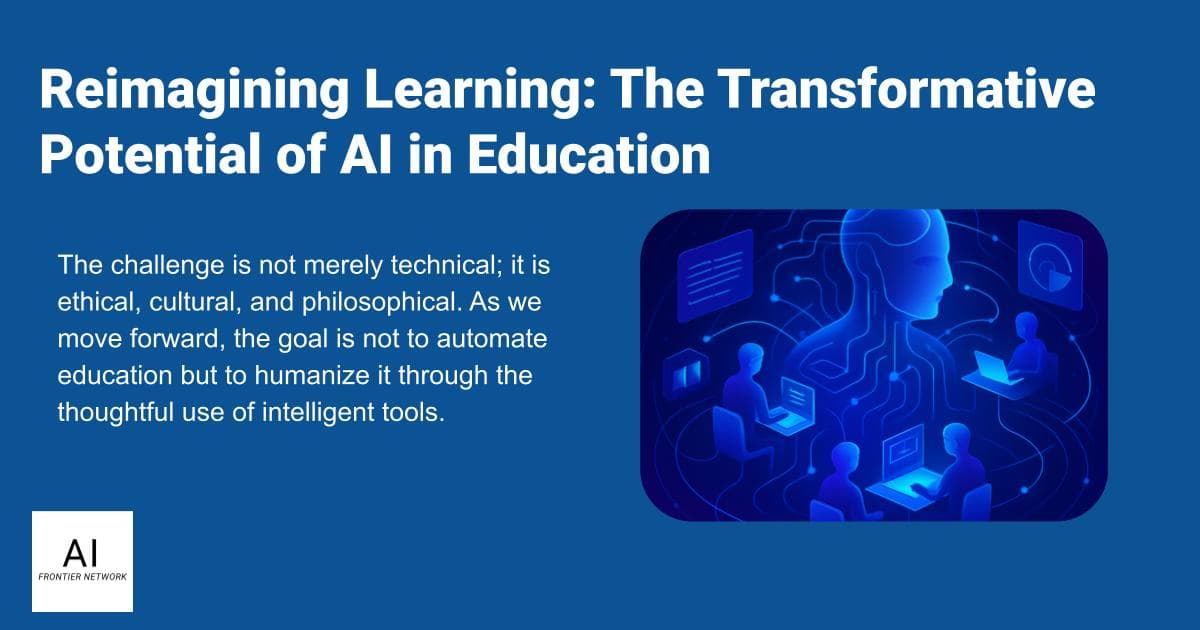In every era of technological transformation, education has stood both as a site of disruption and a symbol of adaptation. Much like the dawn of the internet age, the rise of AI today surfaces questions that go beyond efficiency questions about what it means to learn, to teach, and to grow intellectually in a world increasingly shaped by algorithms. While excitement runs high, realizing AI’s full potential in education requires more than technical upgrades, it demands philosophical shifts, cultural humility, and systemic rethinking.
From Standardized to Personalized: The Shifting Center of Learning
Traditional education has long operated on the logic of standardization: fixed curricula, uniform assessments, one-size-fits-all instruction. AI challenges this foundation. Samarth Neeraw reminds us that, like the internet before it, AI invites both opportunity and skepticism. But unlike earlier tools, AI is capable of real-time responsiveness, reshaping itself based on each student’s cognitive patterns and pace.
Pranav Wadhera envisions an education system that doesn’t just adapt in delivery but becomes interactive in essence. AI, in his view, isn’t just a support tool—it’s an active collaborator in simulations and adaptive learning flows. These insights suggest a move from education at students to learning with students—a profound reorientation of agency.
Rahul B. reinforces this shift, drawing a parallel between AI personalization and tailored cloud computing. Just as cloud systems allocate resources based on need, AI can dynamically allocate content and pacing to match learner profiles. This comparison highlights how adaptive infrastructure can become the invisible scaffolding of human learning.
Curation Over Instruction: The Educator's New Role
As the boundaries between content creation and consumption blur, educators find themselves in new terrain. Ankit Lathigara emphasizes the foundational role of data synthesis in this ecosystem: AI is only as good as the content we feed it, and thoughtful curation is now a pedagogical act.
Tommy T. adds another dimension, urging institutions to evolve from mere content distributors to experience designers. In this vision, faculty aren’t replaced by AI—they are augmented, taking on orchestral roles that harmonize tools, insights, and student needs into cohesive, evolving learning journeys.
Intelligence Meets Intuition: Toward Meta-Learning
Beyond personalization, AI opens new frontiers in meta-learning—the ability to learn how one learns. Dmytro Verner notes that AI can help students discover their optimal learning paths, giving rise to self-awareness as a learning objective. This goes beyond academic outcomes; it cultivates lifelong learners who can adapt with resilience in uncertain futures.
His point dovetails with Ajay Narayan’s focus on real-time feedback and intelligent simulations—not just to improve performance but to foster confidence, reflection, and iterative growth. It’s a future where learning is not only dynamic but emotionally intelligent.
Rebuilding the System: Institutional and Ethical Readiness
While the promise of AI is seductive, it also demands systemic overhaul. Srinivas Chippagiri stresses the urgent need to upskill educators, not just in using tools, but in rethinking pedagogy itself. Without systemic commitment, AI risks becoming another unevenly distributed advantage.
This concern is echoed by Arpna Aggrarwal, who argues that AI literacy must become as fundamental as digital literacy. But literacy, here, isn’t just technical know-how—it’s ethical fluency. Knowing when and how to use AI, and when to let human judgment prevail.
Thoughtful, Not Transactional: The Deeper Stakes of AI in Education
Not all integration is good integration. Dr. Anuradha Rao offers a timely caution: AI, if unchecked, risks reducing learning to performance and knowledge to prediction. Her metaphor of AI as a powerful yet potentially overwhelming force urges us to resist the temptation of speed at the cost of depth.
Ram Kumar N. reframes AI not as a tool but as a turning point—a redefinition of educational purpose itself. With AI, education can become less about information transfer and more about cultivating agility, insight, and a mindset of continuous learning.
Conclusion: Human Potential, Enhanced—Not Replaced
What emerges from these insights is not a consensus, but a convergence: AI can and should transform education, but only if we remain anchored in human values. The challenge is not merely technical; it is ethical, cultural, and philosophical. As we move forward, the goal is not to automate education but to humanize it through the thoughtful use of intelligent tools. The future of learning lies not in machines that teach better, but in systems that help us all learn—deeper, fairer, and truer to our individual potential.













